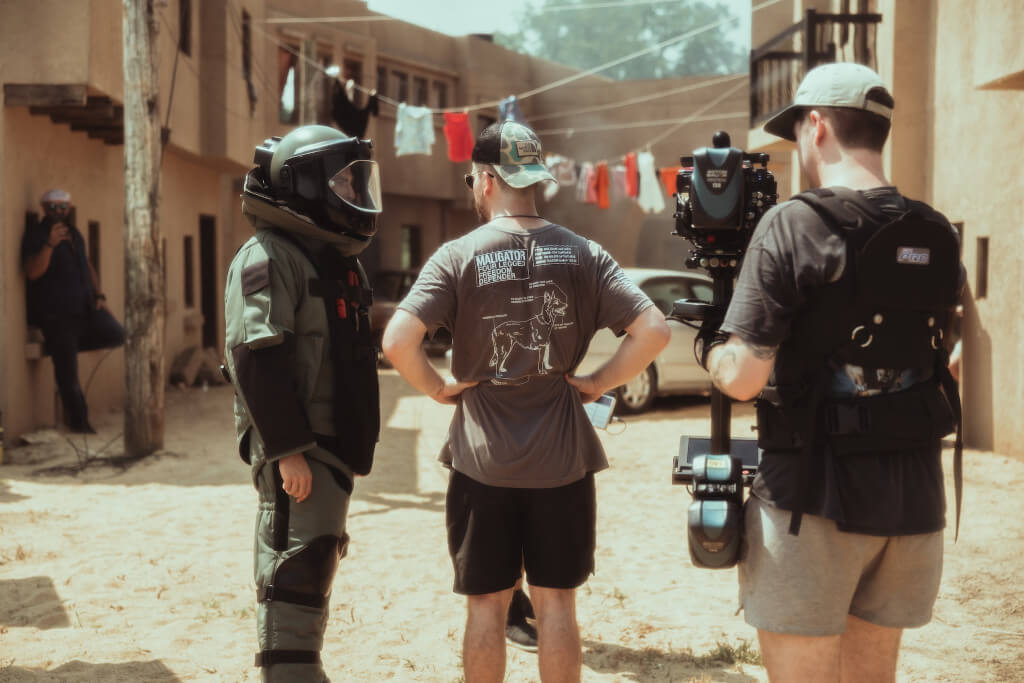When you’re watching a movie or TV show and there’s a scene set on a bustling street or the Main Street of a quaint little town, and you think it looks real, that’s because it is. Furthermore, this is the responsibility of the location manager. Before filming or production on a television show or movie begins, location managers will scout out potential settings.
They need to know the maximum number of cameras that can be set up in a given area, whether there are any special requirements such as access to power sources or the internet, and whether there is parking available for the cast and crew. Location managers also need to be aware of the typical weather patterns that exist at the filming location on the day that filming is scheduled to take place.
In addition to this, the location manager is responsible for determining how much gear can be stored in a given area while still leaving enough room for the cast and crew. Determining whether a scene should take place indoors or outdoors, during the day or at night, on public streets or in an office building is another important decision that must be made. The amount of time spent scouting locations can range from a few days to several weeks, depending on the kind of project that is being filmed.
After selecting a location, the location manager is responsible for obtaining permission from the property owners as well as the business owners. It’s possible that the owner is concerned about issues related to noise or security.
What Exactly Does It Mean When a Movie is Shot in Its Actual Setting?

What exactly does it mean when a film is shot in a particular location? It indicates that the filmmakers do not shoot the scene in a studio but instead travel with the cast and crew to the actual location. Filming on location is an essential part of making movies, but in modern times, it isn’t done nearly as frequently as it used to be.
Over several decades, preferences, as well as technological capabilities, have evolved. Computers have made it possible for directors to stage fictional worlds inside of them rather than filming in actual locations. Despite this, there is still a significant amount of shooting done on location. Location shoots, when done correctly, give a movie an original look and atmosphere that are impossible to achieve any other way.
One Film That Was Shot on Location is Titled the Great Gatsby
The novel of the same name by Ernest Hemingway served as the inspiration for the film The Great Gatsby. The Jazz Age setting of New York City in the 1920s called for a great deal of attention to detail, which is where shooting on location came into play. To obtain all of the shots that he required for his adaptation, director Baz Luhrmann brought the entire cast and crew to Australia.
The result was a visually stunning period piece, and audiences were able to get lost in it because so much thought went into everything from set design to costume selection. The result was a visually stunning period piece.
What Are the Steps Involved in Selecting a Location for a Movie?
Making a movie can be a challenging endeavor, especially when there are a lot of different considerations to take into account. For instance, the location of the filming will have an impact on both the costs associated with making the film as well as the schedule for doing so.
The chosen location will also have a significant impact on the amount of time that the film’s cast and crew have available to work on the production. However, one must keep in mind that it is not only about selecting an ideal location for filming, but also about ensuring that this location possesses all of the necessary elements to make it a great setting for your story. This is something that must be taken into consideration.

The next thing you need to do is figure out what you hope to accomplish with your movie: will it be a drama that takes place in a city and therefore requires a cityscape, or will it be a romantic comedy that takes place in the countryside and therefore requires a beautiful countryside?
Learning everything there is to know about a potential filming location’s advantages and disadvantages is the single most important step in making the right decision. You should ask yourself if the location you have chosen for your film is suitable for the vision you have for it and if it satisfies all of your requirements. Does it have everything you require?
Is everyone on your cast and crew able to work in comfort? Does it provide access to a diverse number of locations? Does it have all of the required buildings and equipment at its disposal? Which is more important, the location’s aesthetic appeal or the cast and crew’s level of comfort while filming? And so forth…
As soon as you have collected enough information about a variety of locations, you will be able to begin narrowing down your options and selecting only those locations that are truly worth taking into consideration.
What Responsibilities Does a Location Manager Have in the Filmmaking Industry?
In addition to that, a good location manager needs to be creative. They are required to consider the shots that their director wants and then search for locations that are suitable for their vision. This may require approaching the owners of local businesses and requesting their permission to shoot on their premises. Location managers communicate with the appropriate authorities in the community whenever it is necessary to close down a street for a filming shoot.

The vast majority of the time, however, locations are discovered through the process of scouting areas around the city using websites such as Yelp and Google Maps. Location scouts are typically the ones responsible for locating potential outdoor shooting locations. Production designers who collaborate closely with the director and cinematographer are most likely to be responsible for setting up interior locations in a film.
To work legally on film productions in the United States, location managers are required to have a certification from the International Location Managers Guild (ILMG). In other countries, film location managers are typically required to obtain certification from their national guilds.
How Can I Work My Way Up to Becoming a Location Manager?
Locations managers need to have a great deal of experience in a particular industry, as well as excellent communication skills and an eye for detail. Additionally, they need to have an excellent eye for detail.
The capacity to collaborate effectively with other people is also an important skill. People who want to work in location management typically already have some experience in the industry they want to work in, most often in the capacity of production assistant. This makes sense when you think about it. They will have previous experience managing the logistics of other productions, and they are accustomed to working in location settings.
The next thing you need to do is enroll in a reputable educational institution and earn a degree in entertainment business management. This will provide you with the necessary theoretical background and provide you with a strong foundation upon which to build your career.
After you have earned this degree, you will be able to begin working at a film location company or another organisation that is connected to this industry so that you can gain practical experience.
Because of this, you’ll have the chance to put everything you’ve learned up to this point into action, and you’ll also get a head start on moving up the corporate ladder toward your ultimate goal of becoming a location manager. If you are interested in learning more about the industry, click here to see what local production companies like YLO Productions do.




